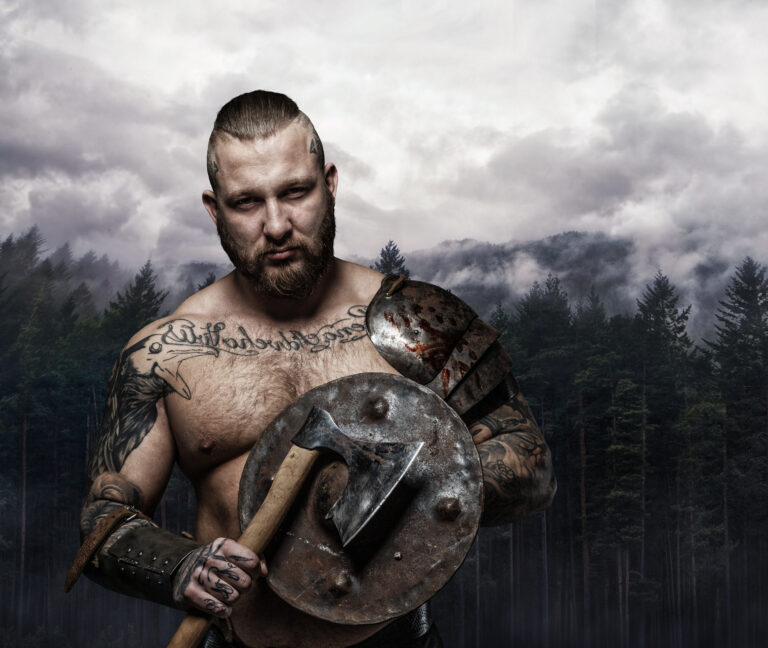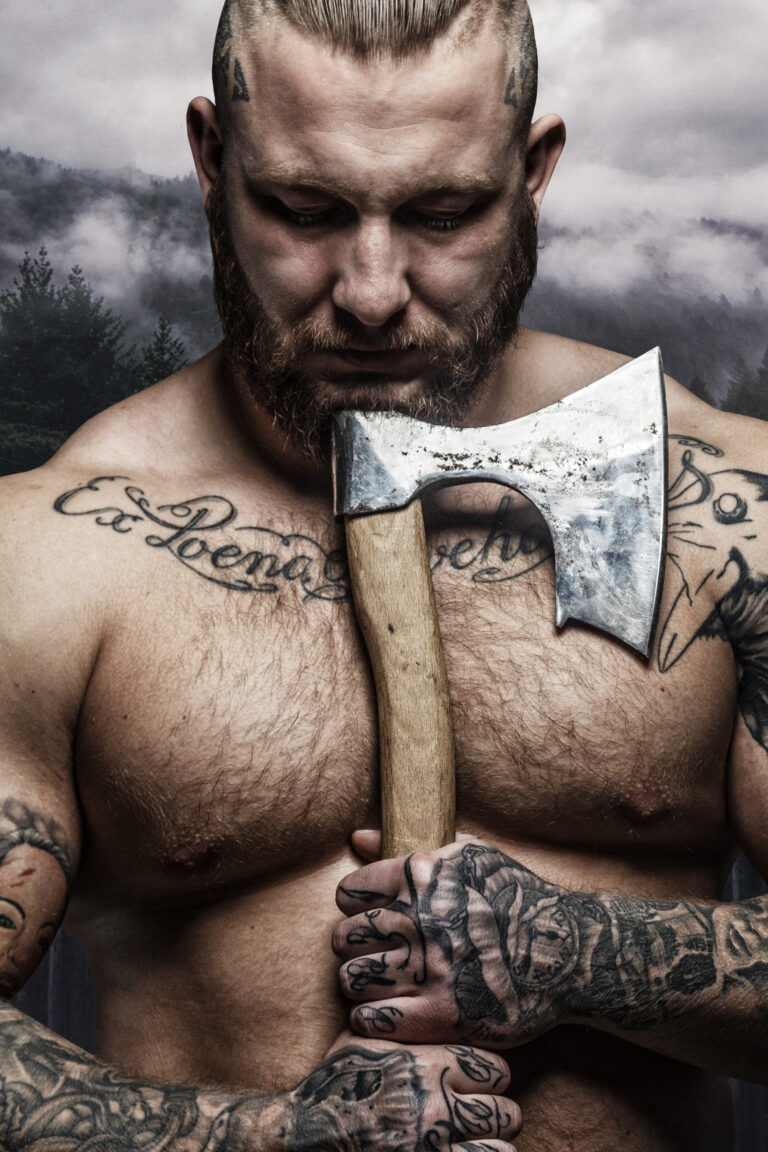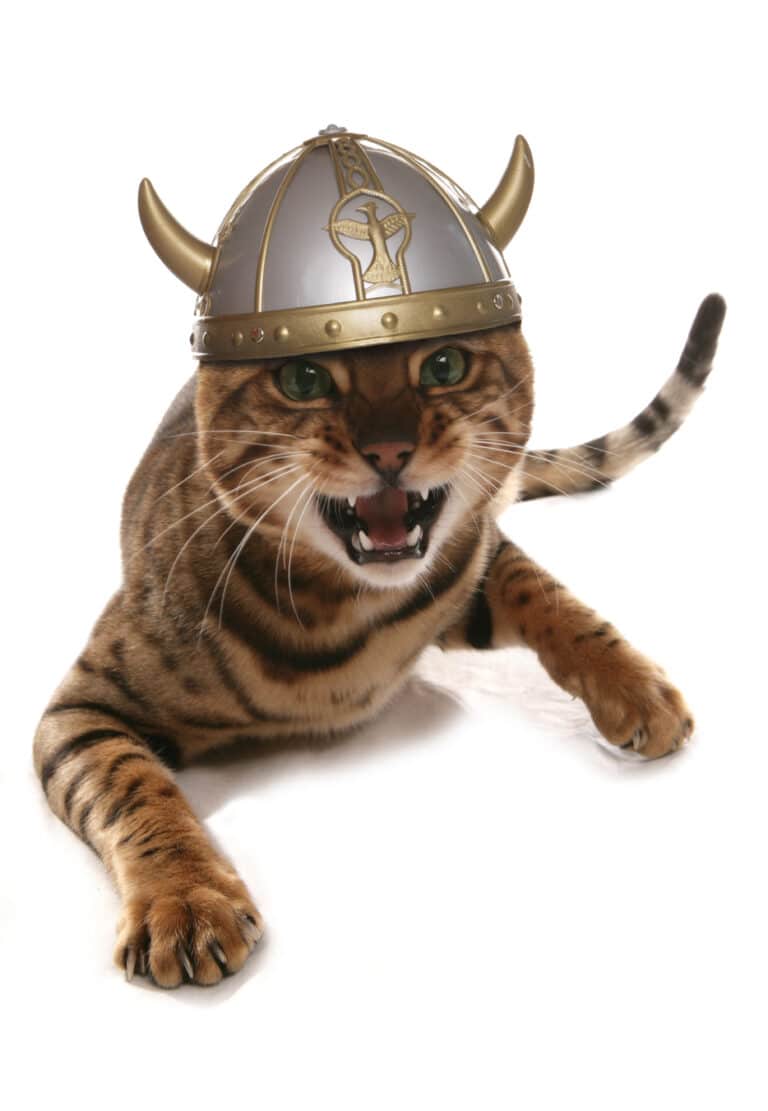Are Vikings Celtic: Examining their Similarities and Differences
They Were Two Ancient Tribes with Modern Ties
You’re probably comfortable with both the word Viking and Celtic. Despite being ancient groups of people, they are both still very present in today’s world. We have no shortage of sports teams named after both groups. (Randomly enough, we also have a whole bunch of cats named after vikings.) No, I don’t know a ton about sports, but I assume these names remain popular amongst teams, because they elicit thoughts of warriors, strength, and stamina. But are Vikings Celtic or are these two separate things? This post is going to explain the difference between the two groups. It will also talk about some of the similarities which might explain why a lot of people think they are more connected than they might be.

Their Territories Overlapped at Times
So the Vikings and the Celts are both groups of people who lived in ancient Europe. The Vikings, of course, have a very intricate and distinct history. We have entire studies of the Viking Age that focus on this collection of people. But the Celts have just as intricate a history. There were Celtic tribes, and a Celtic language, and a Celtic culture all on its own. The problem is that the Celts lived almost a millennia before the Vikings. Their history wasn’t written down. The Vikings have left us with the saga literature. There are also more accounts written in annals from places they attacked. The Celts were not the international travellers that the Vikings were, and they did not leave us such literature. History of the Celts is mostly learned through archeological evidence.

Some Suggest the Celts Influenced the Vikings
There is some argument to make about the Celtic world loosely influencing Vikings of northern Europe. But for the most part, these two groups were entirely separate. They were geographically near one another. Celts had kind of originated in central Europe but of course we probably know them from the early British Isles where their history remains strong today. The Vikings were a little scattered, certainly by the end of their reign. They had kind of originated in Northern Europe, but certainly established Viking settlements during their Viking raids in various parts of Europe. Their timelines, however, don’t really overlap.

Vikings Have a Uniquely Recorded History
So the Vikings were sort of the descendants of ancient Germanic people. The Viking period actually began in what we refer to as the bronze age. This time period stretched from roughly the 9th century to the 11th century. The Vikings of course have been cemented in history as fierce warriors who left an indelible mark on the landscape of Europe. The impact of the Vikings is still felt by lands that were colonized throughout Europe.

Vikings Didn’t Originate in the Same Areas as the Celts
The Vikings got their start in what is known as modern day Norway, Sweden, and Denmark. They quickly colonized Iceland, and Viking invaders reached as far as England, the Irish coast, the northern and Western isles of Scotland, the Isle of Man, and even North America. While the history books record Columbus as the person who “discovered” North America, we know this to be false. Not only because North America was already inhabited by First Nations people, but also because Leif Eriksson from Greenland visited L’anse Aux Meadows in Newfoundland long before Columbus. So just a side note to not always trust your history books.
The Celts Existed during the Iron Age
The Celts are slightly fuzzier. But we know the ancient Celts kind of pop up on our radar at the very end of what we call the iron age. The iron age began around 1200BC, but the celts were around circa the 6th century BC, until the 1st century AD.
Modern History Sometimes Blends and Confuses Their History
We still have a deep connection to all things Celtic. Today the countries of Ireland, Scotland and Wales have a collective memory of the past that involves celts. We have so much art and jewelry inspired by Celtic design. The Vikings also have a ton of designs of their own. Check out this post on Vikings Symbols and their Meanings to look at some. They certainly had their own established religious beliefs. This is not an area of my expertise, but I believe what they ascribed to was a pre-Roman Celtic religion. I also believe they were polytheistic, meaning more than one god.
This is a super cool area, and one I might dive into further in the future. But for now, if the pre-Roman religious type interest you, go check out this publication titled: A Dirty Window on the Iron Age
As I was saying, Celtic art such as the Celtic knot has definitely persisted in our culture today. Some Viking Art that you may have seen used in tattoo designs could be the Web of Wyrd or Gungnir, the Spear of Odin. Go have a look. You might not know the names, but I bet you’ve seen this web of fate design, or this ancient spear design of Odin.

It’s Safe to Say they Were Two Entirely Different Tribes
Clearly the Celtic people existed long before the groups of people who would be consider Danish Vikings, or Norwegian Vikings, were around. This doesn’t exactly mean that there wasn’t a time of overlap where the two groups could have lived in proximity to one another. They have similarities which might suggest an overlap, but take these similarities with a grain of salt. You will find all kinds of wild coincidences around the world where it seems people were just doing similar stuff at the same time. (I am thinking of pyramids popping up in Egypt at the same time the Mayans were building similar structures).

Similarities Certainly Cloud our Understanding
The similiarities we see between these two groups comes mainly from modern sources. Celtic knots and celtic art has certainly survived and influenced everything from jewelry to tattoos. We see celtic knots on everything. We also see depictions of Vikings with tattoos covering their bodies, and they are often celtic knots. Now, the Vikings definitely used celtic knots, or knotted designs in their artwork, but there is no significant sources that show us Vikings actually had tattoos. But these knots are an important and lasting contribution from both tribes.
The Vikings May have Stolen the Celtic Knot from the Celts
A great heathen army crossed oceans and raided the northern Scottish isles of Orkney in the 13th century. This is around the first time when celtic knots began popping up in Viking artwork. They even crossed the Irish sea and made their way to Cornwall and Ireland, where druids had also been using knotwork for centuries. Despite having their own cultures, clearly there was a transference of artistic influence in this case. Just like their later clash with the Christians, it is natural to assume cultural similarities would begin to emerge. A deep influence often passes between a collection of tribes who clash geographically. Whether or not this resulted in what can be dubbed “celtic Vikings” is up for debate.
They Could Have Become the Norse-Gaels
The Vikings and the celts were both among the first people, or at least early people to occupy parts of Europe. The first recorded raid of Ireland came at the end of the 8th century AD, and by this time the golden age of Christianity in Ireland had rooted itself firmly in belief, and celts were more or less absent from the landscape. Because cultural continuity often occurs even during times of distinctive splits, it is possible that celtic culture could have still been prevalent. Christians are also known to have adopted much of the celtic design for their trinity so Vikings could have easily been influenced by this as well.

There Is No Current DNA Connection
While all Europeans probably share some DNA, the terms Celt and Viking actually represent a culture more than a genetically related group of people. Though by the natural migration patterns of human populations, and societal acceptance, those who often lived in close proximity under a cultural norm, shared similar genetic backgrounds as well. Both had different languages that did stem from the indo-european family, but again this is a marker of culture.
Celtic nations were actually found to look like quintessential Irish people. They were known to have red hair, or light hair, and blue eyes. DNA evidence for the Vikings suggest that they actually had dark hair and dark eyes. There was, of course, many instances of Vikings partnering up with people from the various nations that they conquered. Sometimes they would take concubines, or slaves, and sometimes they just fell in love.
Two Separate Groups That Have Inspired Similar Remembered Histories
These two groups seem so similar because they share a fierce history as warriors, and have left a lasting mark on societies today. Both of course, also inspire modern art and Celtic knot designs are probably amongst the most popular tattoo designs you’ll find. I’m sure they rival Viking tattoos. If you have some Celtic or Viking Art drop us a line in the comments, or tag us on Instagram @norseauthority
If you are interested in learning more about where the vikings came from check out our article: Were the Vikings from Iceland.








Excellent items from you, man. I’ve bear in mind your stuff previous to and you are simply extremely fantastic. I actually like what you have got right here, really like what you are stating and the way in which during which you are saying it. You are making it enjoyable and you still take care of to stay it smart. I can not wait to read much more from you. This is actually a great site.